My Father's Microscope
By Jim Scott, June 2019
My father, Robert J. Scott, M.D., had a microscope. I don't know all the details for certain, but it's my understanding that he needed a microscope for medical school (Medical College of Virginia), so he bought this one used. This would have been around 1936, because that's about when he graduated from VMI.
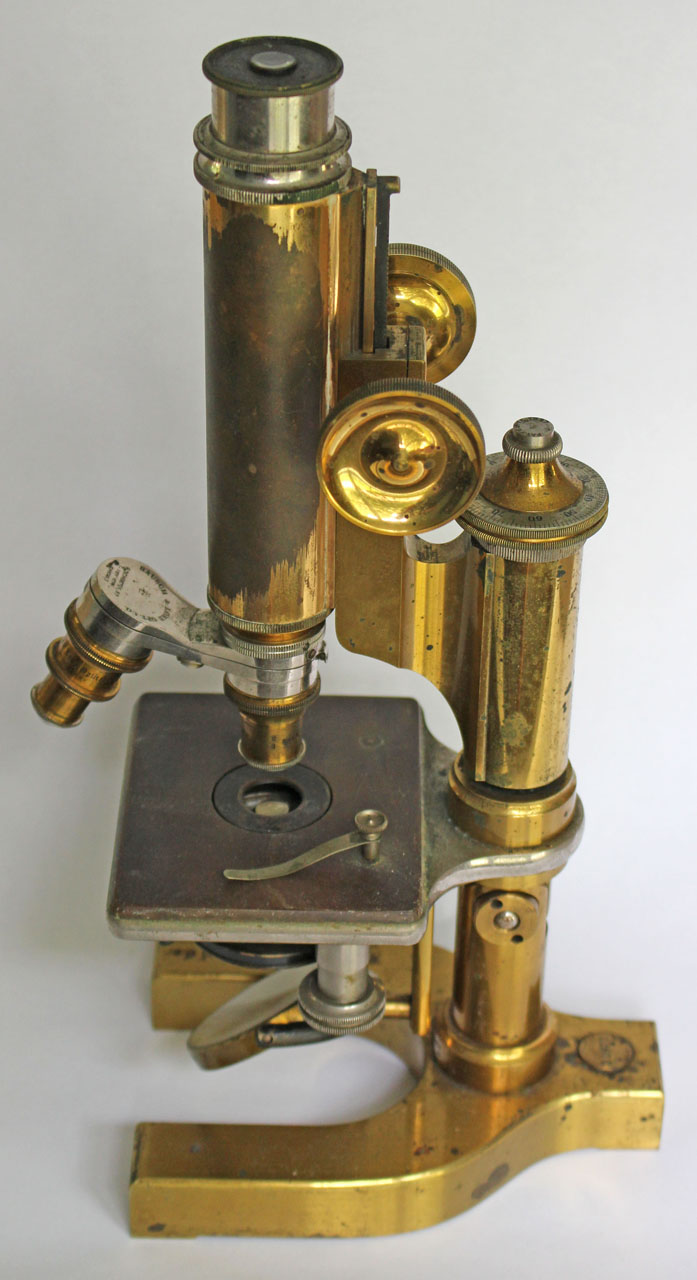
This is a Bausch & Lomb microscope, as evidenced by the inscription on the base.
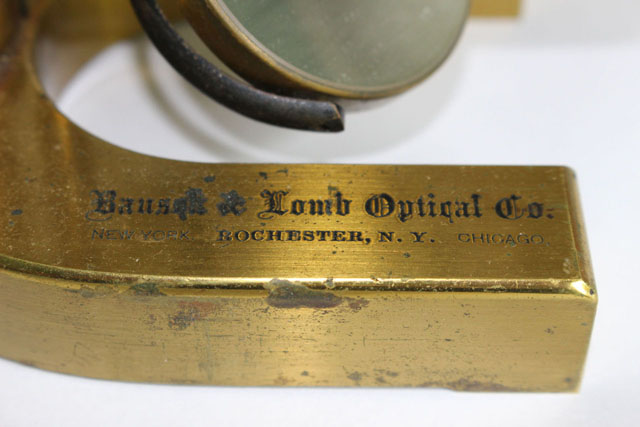
I don't know how old it is, but it appears to be similar to this B&L microscope that I found for sale on the website www.microscopeinternational.com, estimated to have been manufactured "in the early 1900's".

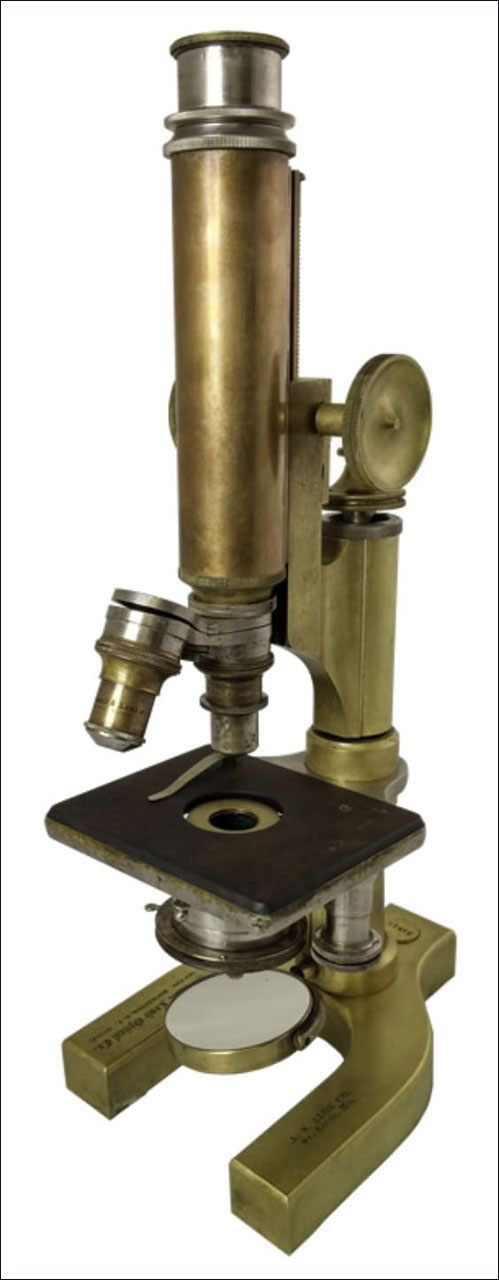
It had a swivel to allow switching between two objective (lower) lenses.
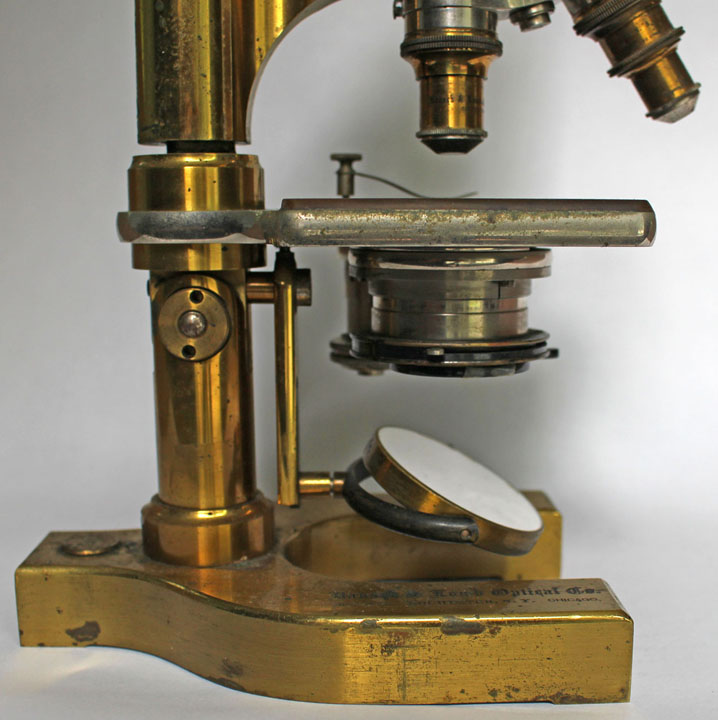
These lenses were removable, and two other objectives were stored separately in cylindrical brass cases with threaded tops. My father said that one of these was an "oil immersion lens", but I never saw it in use.
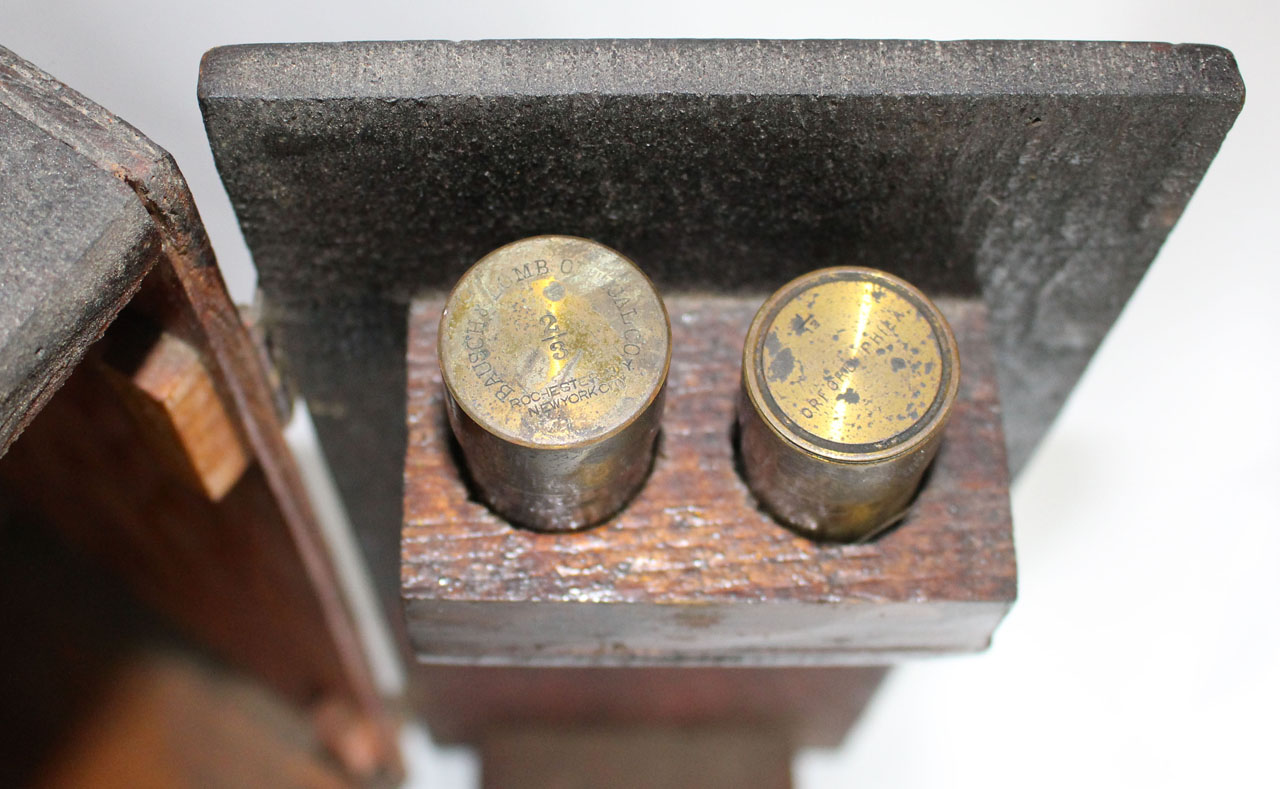
The eyepiece (upper lens) was also removable. Inside it was a circular opening with what appeared to be a short, straight hair cemented at one end to serve as a pointer. The microscope did not have its own light source, so the mirror at the bottom would be angled to reflect a separate light source up through the bottom of the hole in the middle of the flat stage, thereby illuminating the subject from beneath. The mirror had a plane side and a concave side.

Coarse focusing was done with the large circular vertical knobs on either side of the body tube, and fine focusing was done with the horizontal knob centered on the back of the microscope.
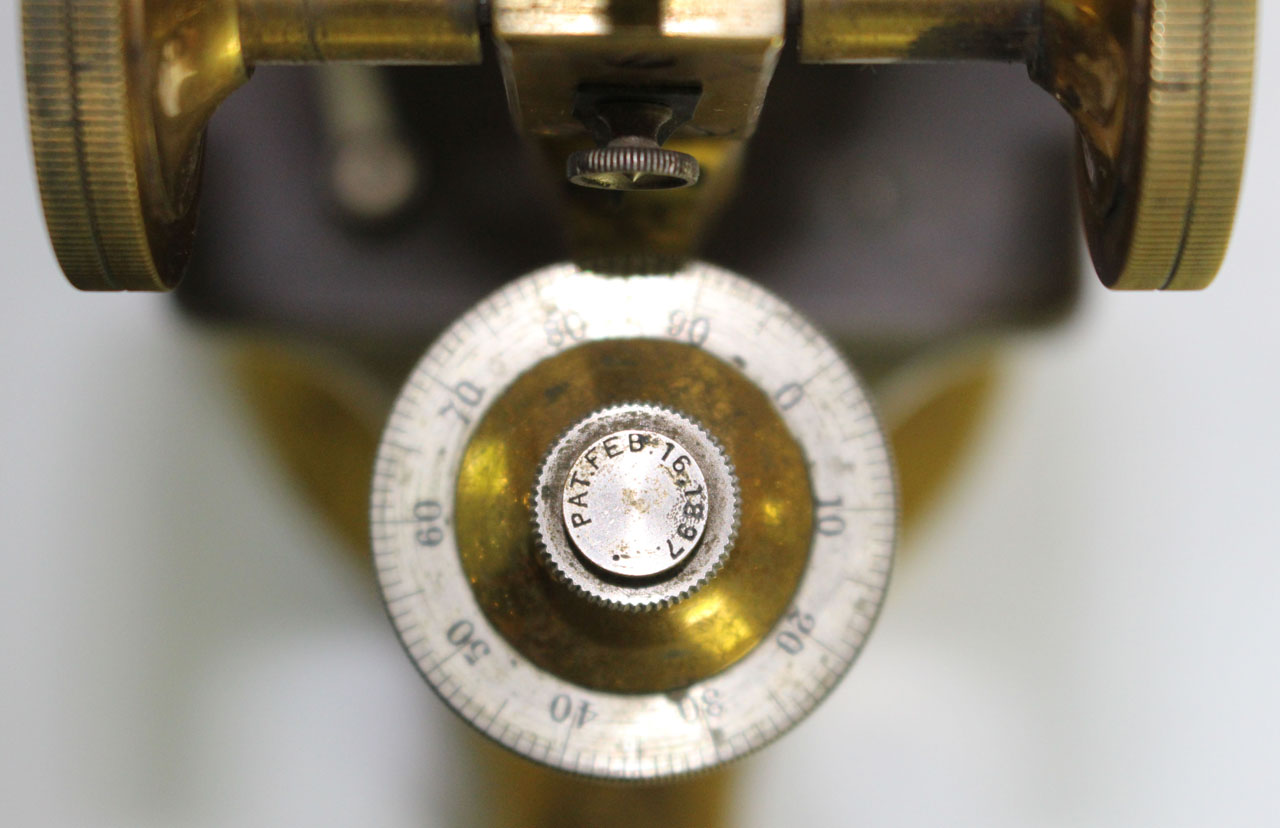
When I was old enough, my father taught me how to use the microscope. I had a lot of fun looking at random objects, including microbes in puddle water and closeups of engraving details in paper money. In the 1960s I made a hobby of growing crystals from water solution. Besides growing large single crystals that I could keep, I could watch crystals grow under the microscope, using polarized light. (I forget which chemical salt I used for this.) I cut out two pieces of cheap plastic polarizing material, and put one inside the eyepiece and the other in a pivoting frame just above the mirror. This bottom filter would assure that the object being viewed would be illuminated with polarized light. Then I put a single drop of a saturated solution of the chemical on a slide under the microscope, and focused on it. As the water of the solution began to evaporate slowly, needlelike crystals would grow in all directions. In this particular chemical, the crystals would refract the polarized light in different directions depending on the orientation of each individual crystal needle. The polarizing filter in the eyepiece allowed me to watch the crystals grow in a variety of ever-changing colors.
The microscope was stored in a handmade wooden carrying case. I don't know if my father built the case or bought it with the microscope. The door of the case had a shelf with two holes to hold the two spare objective lenses. Ironically, despite the obvious care with which the case had been built, the nearest thing to a latch to hold the door shut was a small nail in the edge of the door, fitting loosely into a hole in the edge of the case. In this picture, the nail is gone, but you can see its hole in the door.
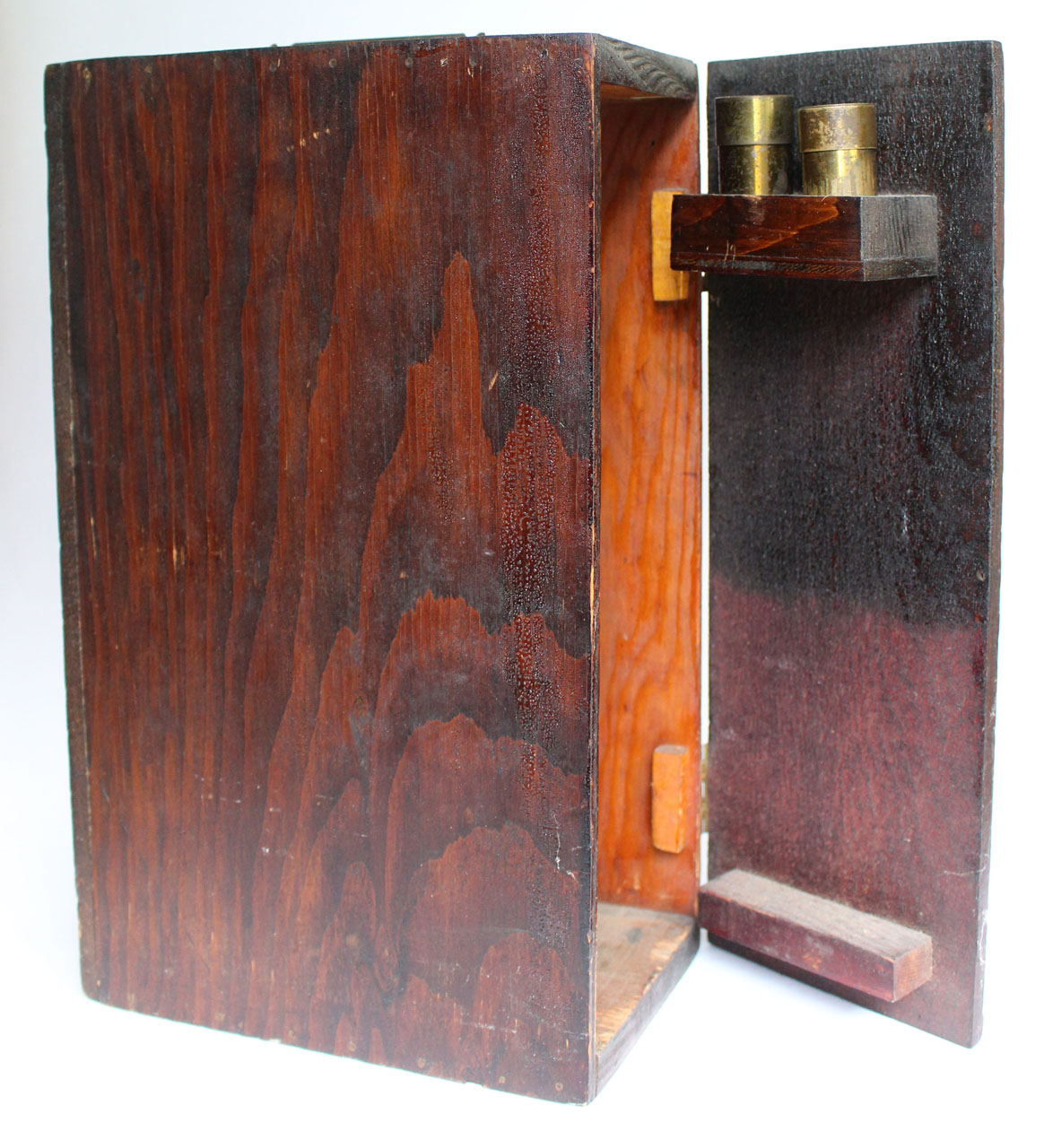
The case was clearly built of scrap wood from old crates, as can be seen in the last two photos. The top of the case came from a crate for Crescent Brand Santa Clara Prunes.
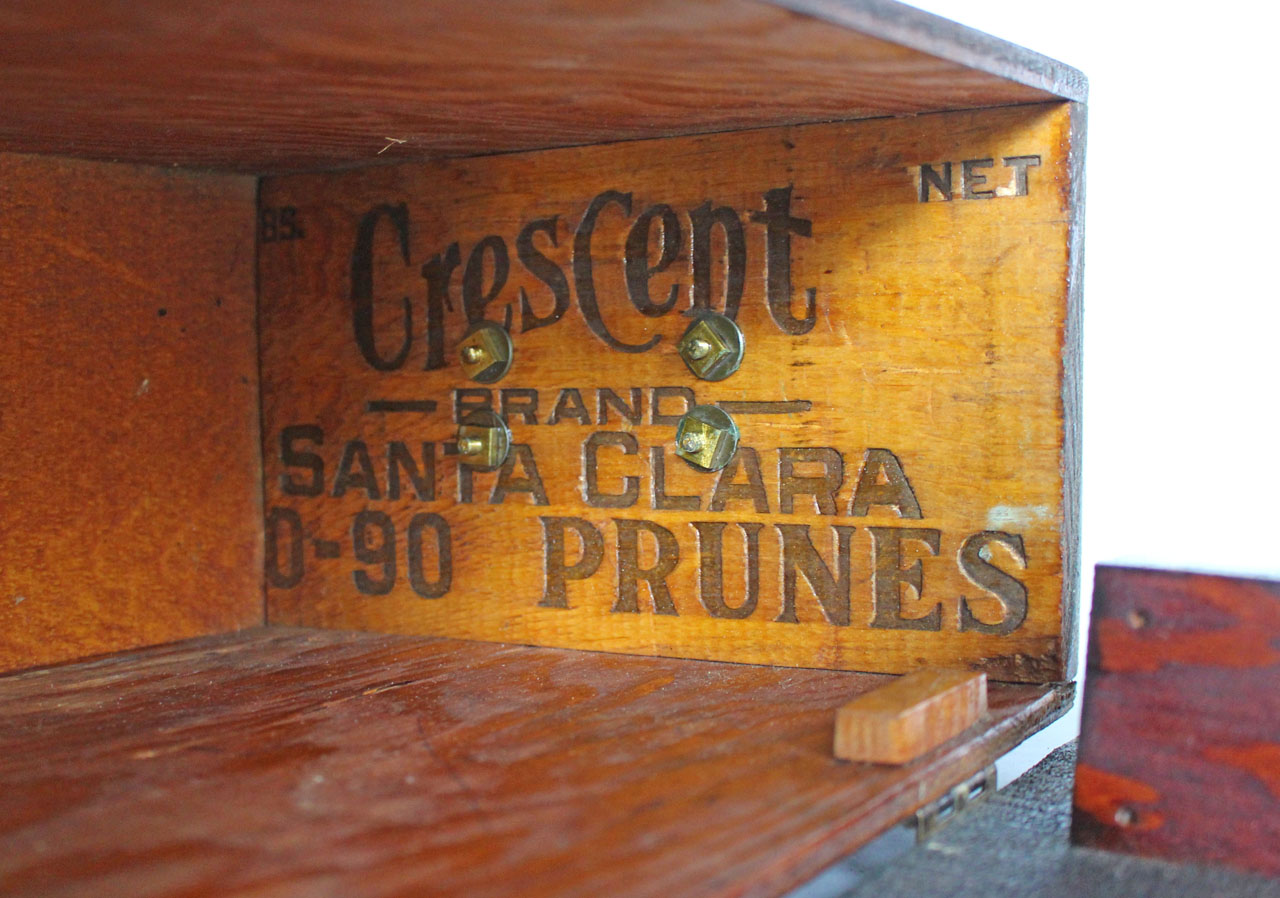
The crate that became the bottom of the case had originally held an unknown product from Fresno, California, symbolized by a large script "B".
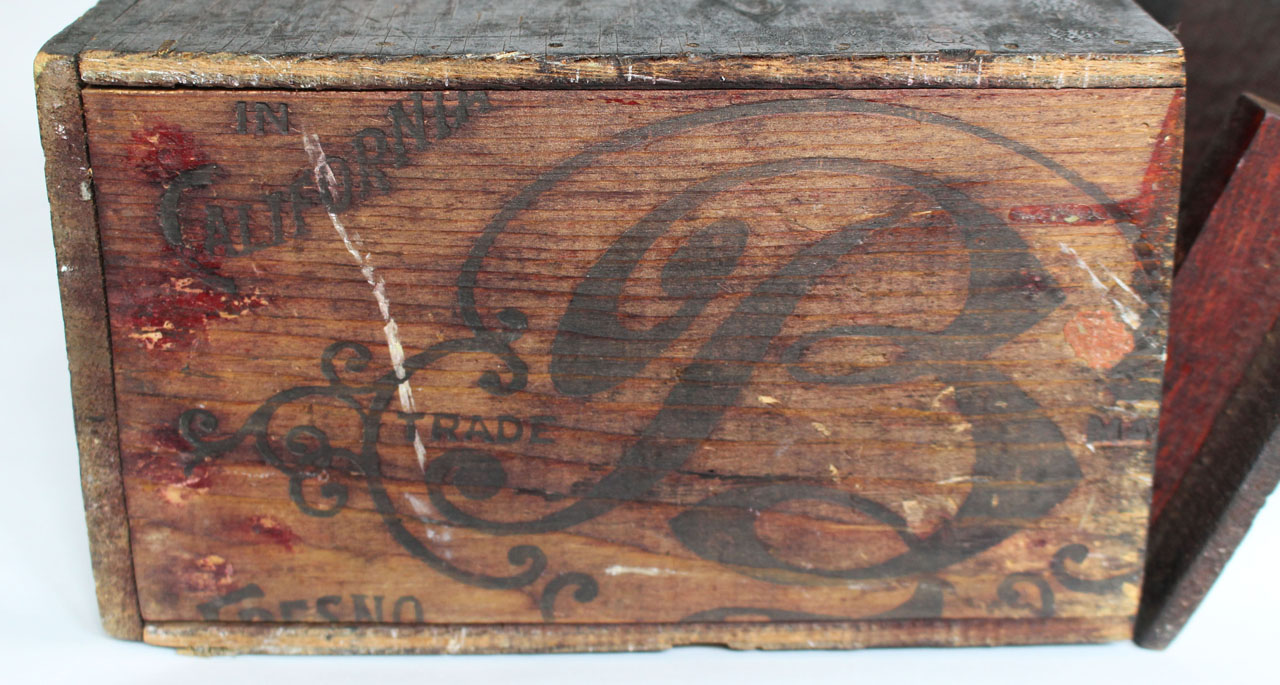
In 2019, I gave the microscope to my sister Mary Lynn Scott.
Last updated June 1, 2019











